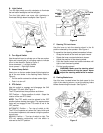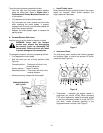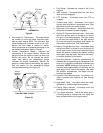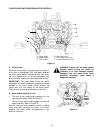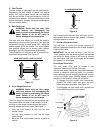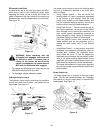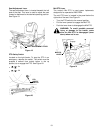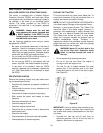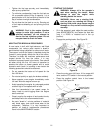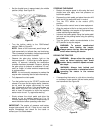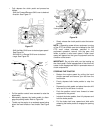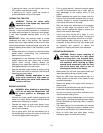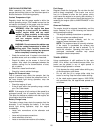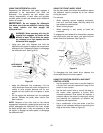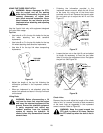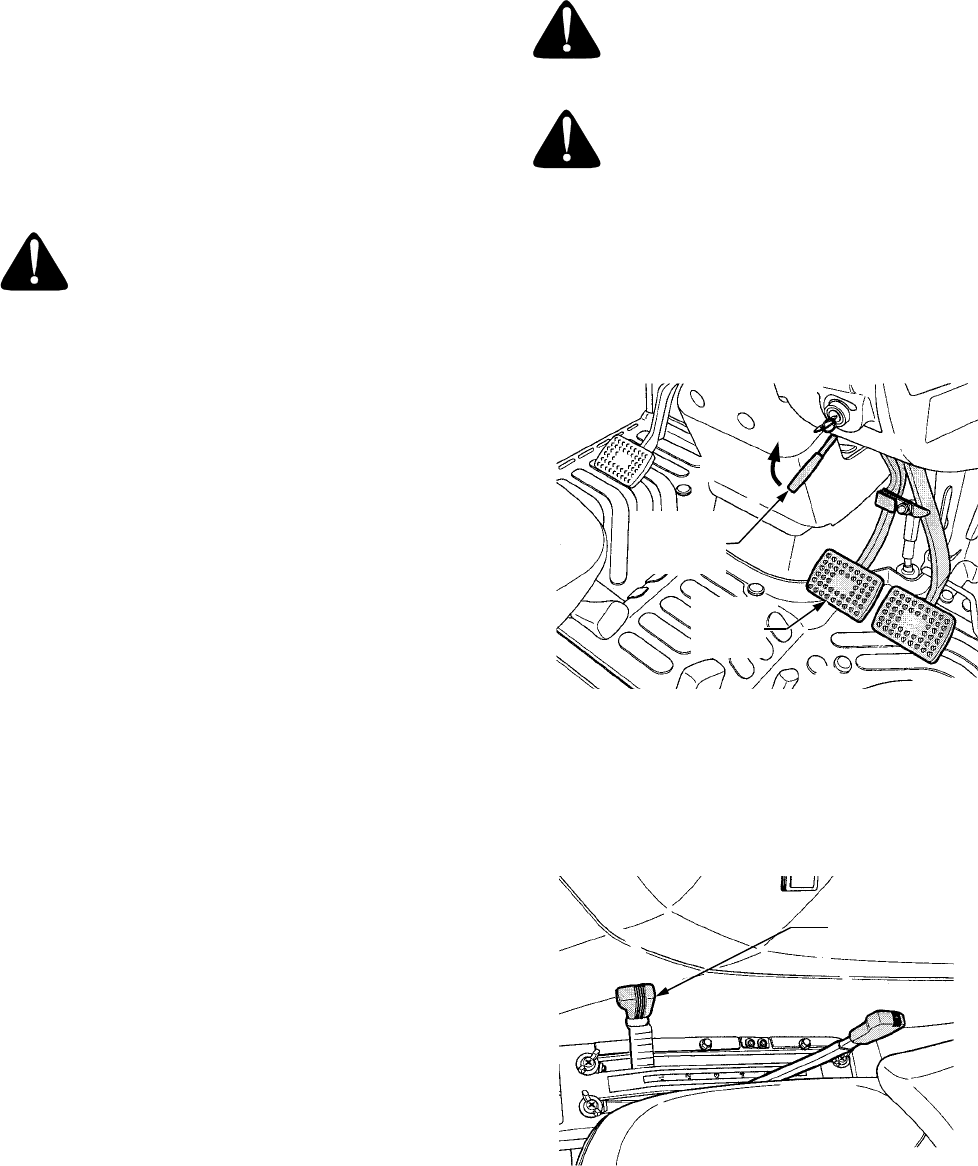
21
• Tighten the fuel cap securely, and immediately
wipe up any spilled fuel.
• To minimize condensation, keep the fuel tank as
full as possible without filling to capacity. It is a
good practice to fill the fuel tank at the end of the
day to reduce overnight condensation.
• Do not allow the fuel tank to run dry. Running out
of fuel requires bleeding air and priming the fuel
system.
WARNING: Fuel in the engine injection
system is under high pressure. If not a
qualified mechanic, do not attempt to
service the fuel injection system. Do not
use your hand to check for leaks.
NEW TRACTOR BREAK-IN PROCEDURES
A new tractor is built with high tolerance, well fitted
components, but various parts require a break-in
period before being subjected to severe work loads.
The manner in which the tractor is handled during the
"break-in" period greatly affects the life of the tractor.
Therefore, to obtain the maximum performance and
longest service life from the tractor, it is very
important to properly break-in the tractor. Care should
be taken during the first 100 hours of operation to
operate the tractor at slower speeds and to avoid
excessive work loads. In handling a new tractor the
following precautions should be observed.
• Do not operate the tractor at full speed for the
first 100 hours.
• Do not start quickly or apply the brakes suddenly.
• Never operate a new engine immediately under
full load. Allow the engine to warm up.
• Avoid operating the engine for prolonged periods
at either high or low speeds with no load.
• Use the transmission’s low speed range for
heavy loads to avoid lugging down the engine
due to overload.
• Closely monitor the engine oil and coolant levels,
and keep filled to the recommended levels.
• As parts "break-in", minute particles of material
may break away, and could cause wear to the
component. Therefore, it is very important to
perform all break-in maintenance procedures
found in the MAINTENANCE section.
STARTING THE ENGINE
WARNING: Always sit in the operator’s
seat when starting the tractor, Never
attempt to start the engine while
standing beside the tractor.
WARNING: Never use a starting fluid,
such as ether, as a starting aid. Using a
starting fluid could cause severe engine
damage or a fire, and will void the engine
warranty.
• Sit in the operator’s seat, adjust the seat position
(see ADJUSTMENTS), and fasten the seat belt
(only if a ROPS is installed and in the up
position).
• Engage the parking brake. See Figure 23.
Figure 23
• Place the main gear shift lever, Hi-Lo range shift
lever, and the PTO switch in the neutral position.
• Place the position control lever in the lowest
position. See Figure 24.
Figure 24
Engage
PARKING
BRAKE
LEVER
Depress
Brake
Pedals
Position Control
Lowest Position



